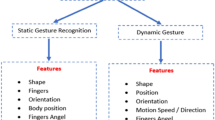Abstract
One of the major problems when dealing with highly dexterous, active hand prostheses is their control by the patient wearing them. With the advances in mechatronics, building prosthetic hands with multiple active degrees of freedom is realisable, but actively controlling the position and especially the exerted force of each finger cannot yet be done naturally. This paper deals with advanced robotic hand control via surface electromyography. Building upon recent results, we show that machine learning, together with a simple downsampling algorithm, can be effectively used to control on-line, in real time, finger position as well as finger force of a highly dexterous robotic hand. The system determines the type of grasp a human subject is willing to use, and the required amount of force involved, with a high degree of accuracy. This represents a remarkable improvement with respect to the state-of-the-art of feed-forward control of dexterous mechanical hands, and opens up a scenario in which amputees will be able to control hand prostheses in a much finer way than it has so far been possible.
Similar content being viewed by others
References
Bishop CM (1995) Neural networks for pattern recognition. Oxford University Press, New York
Bitzer S, van der Smagt P (2006) Learning EMG control of a robotic hand: towards active prostheses. In: Proceedings of ICRA, international conference on robotics and automation, Orlando, pp 2819–2823
Boser BE, Guyon IM, Vapnik VN (1992) A training algorithm for optimal margin classifiers. In: Haussler D(eds) Proceedings of the 5th annual ACM workshop on computational learning theory.. ACM Press, New York, pp 144–152
Burges CJC (1998) A tutorial on support vector machines for pattern recognition. Knowledge Discovery and Data Mining 2(2)
Butterfass J, Fischer M, Grebenstein M (2004) Design and experiences with DLR hand II. In: Proceedings of the world automation congress
Chang CC, Lin CJ (2001) LIBSVM: a library for support vector machines. Software available at http://www.csie.ntu.edu.tw/~cjlin/libsvm
Cristianini N, Shawe-Taylor J (2000) An introduction to support vector machines (and other kernel-based learning methods) CUP
CyberHand (2007) The CyberHand project. http://www.cyberhand.org
De Luca CJ (1997) The use of surface electromyography in biomechanics. http://www.health.uottawa.ca/biomech/courses/apa4311/biomec~1.htm
Ekvall S, Kragić D (2005) Grasp recognition for programming by demonstration. In: Proceedings of ICRA, international conference on robotics and automation, Barcelona
Ferguson S, Dunlop GR (2002) Grasp recognition from myoelectric signals. In: Proceedings of the Australasian conference on robotics and automation, Auckland
Figueiredo M (2003) Adaptive sparseness for supervised learning. IEEE Trans Pattern Anal Mach Intell 25(9): 1150–1159
Huang H, Jiang L, Zhao D, Zhao J, Cai H, Liu H, Meusel P, Willberg B, Hirzinger G (2006) The development on a new biomechatronic prosthetic hand based on under-actuated mechanism. In: Proceedings of the 2006 IEEE/RSJ international conference on intelligent robots and systems, pp 3791–3796
i-Limb (2007) The i-Limb system. http://www.touchbionics.com
Keerthi SS, Chapelle O, DeCoste D (2006) Building support vector machines with reduced classifier complexity. J Mach Learn Res 8: 1–22
Lee YJ, Mangasarian OL (2001) RSVM: reduced support vector machines. In: Proceedings of the SIAM international conference on data mining
NIDAQ (2007) National instruments PCI-6023E data sheet. http://www.ni.com/pdf/products/us/4daqsc202-204_ETC_212-213.pdf
OFTS (2007) SpaceControl GmbH optical force-torque sensor leaflet. http://spacecontrol.de/
Orabona F, Castellini C, Caputo B, Luo J, Sandini G (2007) Indoor place recognition using online independent support vector machines. In: Proceedings of the British machine vision conference (BMVC) (to appear)
OttoBock (2008a) Otto Bock MYOBOCK 13E200=50 electrodes. http://www.ottobockus.com/products/upper_limb_prosthetics/myoelectric_hands_myobockr.asp
OttoBock (2008b) Otto Bock SensorHand hand prosthesis. http://www.ottobockus.com/products/upper_limb_prosthetics/myoelectric_hands_sensorhand.asp
Tipping M (2000) The relevance vector machine. In: Advances in neural information processing systems, San Mateo
Tsuji OFT, Kaneko M, Otsuka A (2003) A human-assisting manipulator teleoperated by EMG signals and arm motions. IEEE Trans Rob Autom 19(2): 210–222
Vijayakumar S, D’Souza A, Schaal S (2005) Incremental online learning in high dimensions. Neural Comput 17: 2602–2634
Author information
Authors and Affiliations
Corresponding author
Additional information
This work is partially supported by the project NEURObotics, FP6-IST-001917.
Rights and permissions
About this article
Cite this article
Castellini, C., van der Smagt, P. Surface EMG in advanced hand prosthetics. Biol Cybern 100, 35–47 (2009). https://doi.org/10.1007/s00422-008-0278-1
Received:
Accepted:
Published:
Issue Date:
DOI: https://doi.org/10.1007/s00422-008-0278-1




